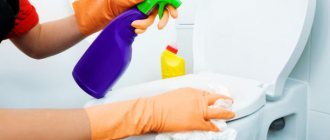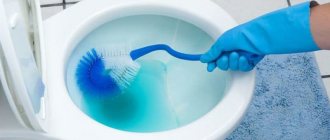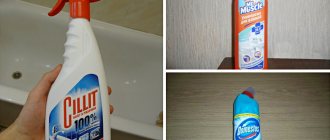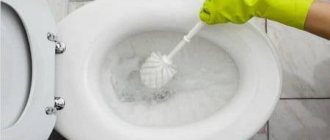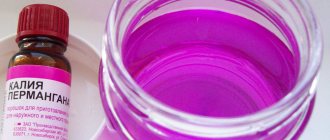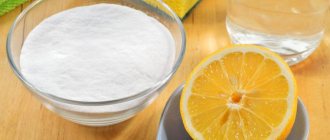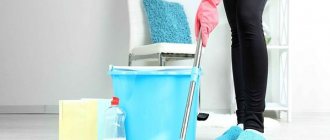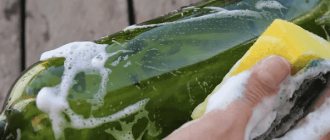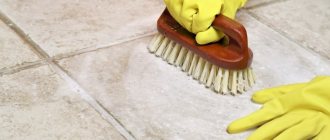Author: Dimon
04 September 2022 14:45
Tags: interesting facts tea
1830
3
If you do not wash the cup thoroughly immediately after drinking tea, an unpleasant darkish coating will remain on the walls. Sometimes old stains do not disappear even after washing. As a result, the dishes take on an unkempt and sloppy appearance.
0
Why does this happen and is this plaque dangerous to health?
Causes
The leaves contain tannins. They give the drink bitterness and provide an astringent effect. Because of them, a cloudy film forms on the surface of the drink. It is not always visible, but over time it appears on the dishes.
When we drink, the mug tilts, a film settles on the cup and dries, becoming darker and thicker. This is the reason for traces that are difficult to wash off.
Is the raid dangerous?
Tannins, the pigments of which color dishes, are not only not dangerous, but are even beneficial for the body. Here are just some of the properties of tannins and catechins:
- They have anti-inflammatory and antibacterial effects;
- Strengthen the walls of blood vessels;
- Cleanse the body of toxins;
- Improves liver condition;
- They promote the release of the hormones dopamine and serotonin, which means they improve mood.
With excessive use, side effects occasionally occur:
- Abdominal pain, indigestion;
- Pressure surges;
- Decreased appetite.
Interesting: Why do people in the East eat with chopsticks?
Tannins and catechins are found not only in black, but also in green tea. Moreover, their concentration is higher in it. This is one of the reasons why it is so useful. Tannins are also found in plants such as oak, chestnut, persimmon, cocoa, conifers, and bird cherry.
The stronger the tea you brew, the more likely it is that plaque will appear. Although it is not harmful to health, excessive consumption of caffeine contained in tea may not be beneficial. So if you regularly get plaque on the sides of your mug or glass, you might want to drink a weaker drink.
Interesting fact : in order for drinking tea to bring the greatest benefits, you should add lemon to it. This citrus improves the absorption of tannins, not to mention its other beneficial properties. It is also useful to add mint, lemon balm or thyme to tea.
Traditional cleaning methods
Tools that almost everyone has will help remove tea stains from your cup:
- lemon or citrus juice;
- toothpaste;
- Coca Cola;
- alcohol;
- salt;
- kefir or whey.
All methods of cleaning a mug do not require significant time investment - it will take a couple of minutes, no more. Let's figure out how to wash a cup using a specific method.
Citric acid and juice
To clean dishes from plaque, you need to take 1 tsp for 1 mug. products, add hot water and wait. After 5 minutes have passed, you can wash the cup. Citric acid works well to remove traces of tea on a mug.
Natural citrus juice is almost as effective. You need to cut off a slice and rub the mug with it, wait half an hour, then wash the cup. This method is used for minor contamination.
Toothpaste
Another simple method to remove plaque. You can use powder or toothpaste as a cleaning agent:
- take a brush, wet it and apply the product to it;
- Thoroughly rub the walls and bottom of the mug, and then wash off the foam and remaining paste with running water.
After the procedure, the cup will regain its original appearance.
Coca Cola
To clean dishes:
- bring the drink to a boil;
- Pour sparkling water into a mug;
- soak the liquid for 12 hours.
The acid contained in Coca-Cola will dissolve the plaque.
Kefir, whey
There is also an extraordinary method for cleaning a mug - you don’t have to make any effort. For example, you can leave whey or kefir in a cup until the morning, and then you only need to rinse the dishes.
Ammonia
Ammonia solution is a reliable cleaner that can remove the most stubborn plaque. It is better to wear gloves when working with this substance.
To clean, you will need to dilute ammonia in water in a ratio of 1:4. Leave the solution in the cup for 1-2 hours, then drain the liquid, wash the dishes with gel, pour over boiling water and let dry.
Salt
This method cannot be used for glazing - hard crystals can damage the surface, cracks will appear, and this will only speed up the process of re-contamination.
To remove plaque, you need to rub the cup with salt. You need to use Extra, or even better, its solution. For 1 tbsp. 1 tsp of water will be required. salt.
Recommendations for caring for cups
- Wash your cup immediately after drinking tea or coffee. This will help so that the plaque does not have time to harden and the cup can be easily washed;
- Brew tea and coffee in teapots so that there is less residue on the cup;
- After all procedures, wash the cup with a regular detergent and rinse well under running water so that no odor remains, as some products can be toxic;
- Perform all procedures wearing rubber gloves to avoid an allergic reaction.
If you strictly follow all the tips written in this article, your favorite mug will have a very well-groomed and beautiful appearance for a long time.
Use of household chemicals
With the help of special means, you can destroy tea stains in a cup without any effort. Even old stains are easily removed thanks to the presence of active ingredients.
The most persistent and thick plaque can be removed using concentrated Faberlic gel (lemon and mint) with bioenzymes. Soft consistency is another advantage of such products. The surface is not scratched, but is gently cleaned.
Popular products for removing tea stains are Pemolux and Comet. They are safe and versatile, used for cleaning the house. Pemolux is available in powder form and contains active ingredients.
Comet is a cleaning product and does not contain chlorine or its compounds. Safe for hands and does not damage delicate surfaces.
Acetic acid
Acetic acid is not the best way to combat plaque, since the smell of vinegar is quite pungent.
Put rubber gloves on your hands. Apply acetic acid to the sponge and try to scrub off the plaque. Then wash the cup with your usual cleanser.
To clean the metal lid of a thermos or a French press filter from plaque, you need to pour warm water into it, add 5-10 ml of acetic acid and leave overnight. In the morning, clean the dirt with a sponge and wash the container with dish soap.
The method is not suitable for cleaning plastic dishes: acetic acid spoils them.
Using the dishwasher
To wash a mug, you just need to place it in the PMM and add detergent (in the form of tablets, liquid, powder) - what could be simpler! However, porcelain cups will have to be washed by hand. Of course, theoretically, they can be loaded into the machine, but these dishes are highly fragile and do not like sudden changes in temperature and the aggressive effects of cleaning agents. Washing it in a car can harm it.
You won’t be able to clean the tea strainer in the PMM either; you will have to do it manually. Difficulties also arise with the teapot: the machine will not be able to thoroughly clean the narrow spout from tea deposits; in hard-to-reach places, it is poorly cleaned or does not wipe off at all automatically.
Tablets for cleaning dentures
These tablets are used to clean dentures from plaque and food debris, so they can also easily cope with tea plaque:
- Place 1-2 tablets on the bottom of the kettle and fill with boiling water (it is better to find out the exact ratio of the number of tablets and water by reading the instructions).
- Since the cleaning process will create a lot of foam, place the kettle in the sink or on a tray.
- After a few hours (if it’s heavily soiled, it’s better to leave it until the morning), drain the water, scrub the walls with a sponge and rinse well with water.
What to use?
To effectively clean your teapot and strainer, you may find the following products useful:
- liquid detergent composition;
- lemon acid;
- vinegar;
- kitchen salt;
- soda.
Important! Once you decide that you need to clean the inside of the teapot with baking soda, try using less abrasive solutions first. Grains of soda can damage the enamel on the walls of the cookware, which will significantly complicate its care in the future.
Chemicals to combat coffee or tea residues
Treating tea or coffee deposits with milk, powders and other ready-made cleaning products is a huge exaggeration and a waste of money. Not to mention the “ingenuity” of some housewives who pour other kitchen utensils, such as fabric bleach, into their favorite mugs.
This is not only a health hazard, but above all, it is simply stupid.
In the end, dirt can be removed without problems by using something that is completely safe and always at hand. We are talking about chemicals for kitchenware. After using it, be sure to rinse the dishes with plenty of water.
Author: Sergey Tumanov
Clinical researches
Clinical studies have proven that regular use of ASEPTA professional toothpaste improved the condition of the enamel by 64% and reduced tooth sensitivity by 66% after just 4 weeks.
Sources:
- Report on the determination/confirmation of the preventive properties of personal oral hygiene products “ASEPTA PLUS” Remineralization doctor-researcher A.A. Leontyev, head Department of Preventive Dentistry, Doctor of Medical Sciences, Professor S.B. Ulitovsky First St. Petersburg State Medical University named after. acad. I.P. Pavlova, Department of Preventive Dentistry
- Report on determining/confirming the preventive properties of toothpaste “ASEPTA PLUS” COFFEE and TOBACCO Author: doctor-researcher A.A. Leontyev, head Department of Preventive Dentistry, Doctor of Medical Sciences, Professor S.B. Ulitovsky. First St. Petersburg State Medical University named after. acad. I.P. Pavlova, Department of Preventive Dentistry
- Report on determining/confirming the preventive properties of toothpaste “ASEPTA PLUS” GENTLE WHITENING” Author: doctor-researcher A.A. Leontyev, head Department of Preventive Dentistry, Doctor of Medical Sciences, Professor S.B. Ulitovsky First St. Petersburg State Medical University named after. acad. I.P. Pavlova, Department of Preventive Dentistry
- Clinical and laboratory assessment of the influence of domestic therapeutic and prophylactic toothpaste based on plant extracts on the condition of the oral cavity in patients with simple marginal gingivitis. Doctor of Medical Sciences, Professor Elovikova T.M.1, Candidate of Chemical Sciences, Associate Professor Ermishina E.Yu. 2, Doctor of Technical Sciences Associate Professor Belokonova N.A. 2 Department of Therapeutic Dentistry USMU1, Department of General Chemistry USMU2
- Clinical studies of antisensitive toothpaste “Asepta Sensitive” (A.A. Leontyev, O.V. Kalinina, S.B. Ulitovsky) A.A. LEONTIEV, dentist O.V. KALININA, dentist S.B. ULITOVSKY, Doctor of Medical Sciences, Prof. Department of Therapeutic Dentistry, St. Petersburg State Medical University named after. acad. I.P. Pavlova
- The role of anti-inflammatory rinse in the treatment of periodontal diseases (L.Yu. Orekhova, A.A. Leontyev, S.B. Ulitovsky) L.Yu. OREKHOVA, Doctor of Medical Sciences, Prof., Head of Department; A.A. LEONTIEV, dentist; S.B. ULITOVSKY, Doctor of Medical Sciences, Prof. Department of Therapeutic Dentistry of St. Petersburg State Medical University named after. acad. I. P. Pavlova
Coca Cola
Coca-Cola and similar drinks contain phosphoric acid, which can remove any type of plaque from many surfaces in a short time.
If the stains are light: pour Coca-Cola into the kettle and leave for several hours. Then drain and evaluate the result. The procedure can be repeated if necessary.
If there is a strong coating: heat the Coca-Cola without boiling and pour it into the kettle. Then proceed as in the first point.
After clearing the kettle of deposits, rinse it with water and set it to dry.
Tools and devices
Methods for cleaning forks and spoons from persistent stains involve the use of certain means and devices. Cleaning products is a mechanical process. The main actions are aimed at scrubbing away dirt and polishing clean cutlery. In some cases, it is recommended to heat cutlery in water or soap solutions. It all depends on the degree of pollution and its nature. The most common reasons for the need for cleaning are:
Most often, dishwashing detergent or natural substances are used to wash cutlery, such as:
In addition to the listed means, most contaminants can be dealt with using:
You can also wash and clean dirt with chlorine-containing solutions, for example, “Belizna” or “Domestos”. Regardless of the choice of cutlery cleaner, you should take care of the skin of your hands: it must be protected with regular medical gloves.
Without exception, all cutlery can be washed in soapy water or liquid dishwashing detergent. But there is no single cleaning product.
All dirt without exception can be easily removed in the dishwasher. But what to do if this useful unit is not in your arsenal? Of course, wash and clean spoons and forks by hand.
Having decided to put your cutlery in order, you need to be patient and prepare the following equipment:
- a foam sponge with a hard side;
- “waffle” towel;
- hard toothbrush;
- paper or cotton napkins;
- pieces of flannel or other soft fabric on a natural basis;
- bowl or small metal basin.
Depending on the type of material of the cutlery that needs cleaning, you may also need pieces of metal foil, flannel cloths and other items. You will learn about them in the next section, which talks about the rules for cleaning a specific type of appliance.
New comments
Concentrated dishwashing detergent gently removes stains from glass surfaces. Herbal ingredients do not irritate the delicate skin of the hands . Green tangerine extract leaves a light, pleasant aroma.
Expert opinion
Ksenia Diyanova, expert on beauty, purity, harmony
Ask me any questions, I will be happy to answer!
In exceptional cases, when there is no time to wait for the dishes to dry naturally, they are carefully rubbed with clean, dry linen towels. If there is a need to clean silver items, it is better to use the powder without adding water, apply it to a sponge or rag, and rub the surface with it until the dirt is removed. Method 3 Ask me all your questions, I will be happy to answer!

